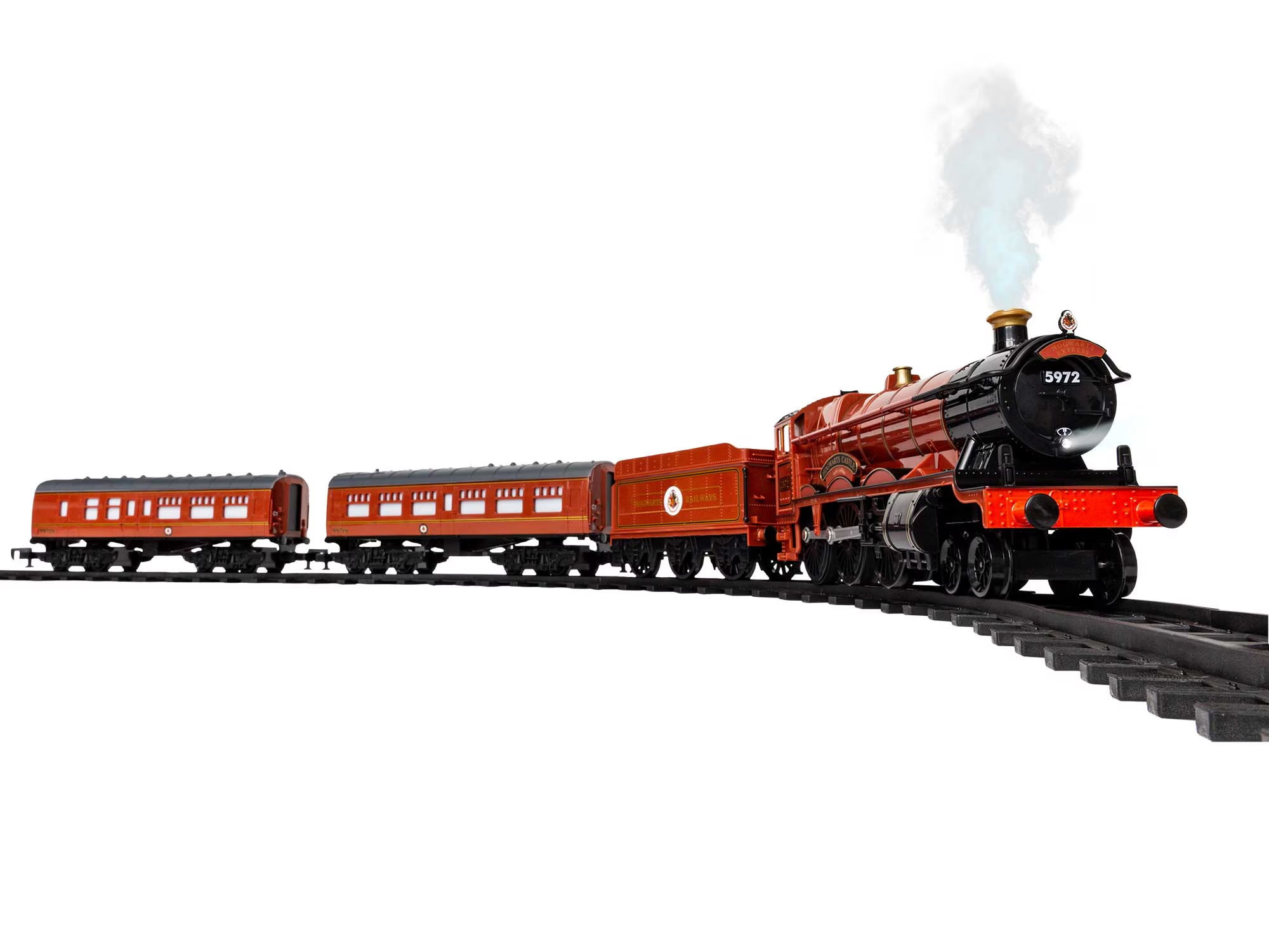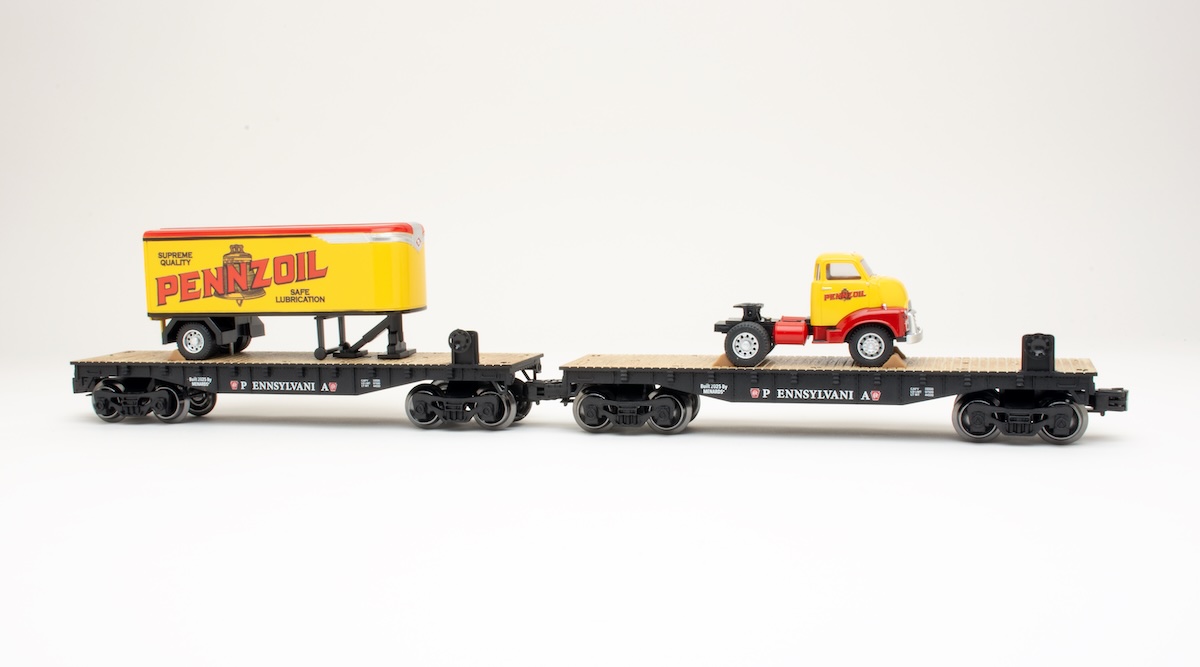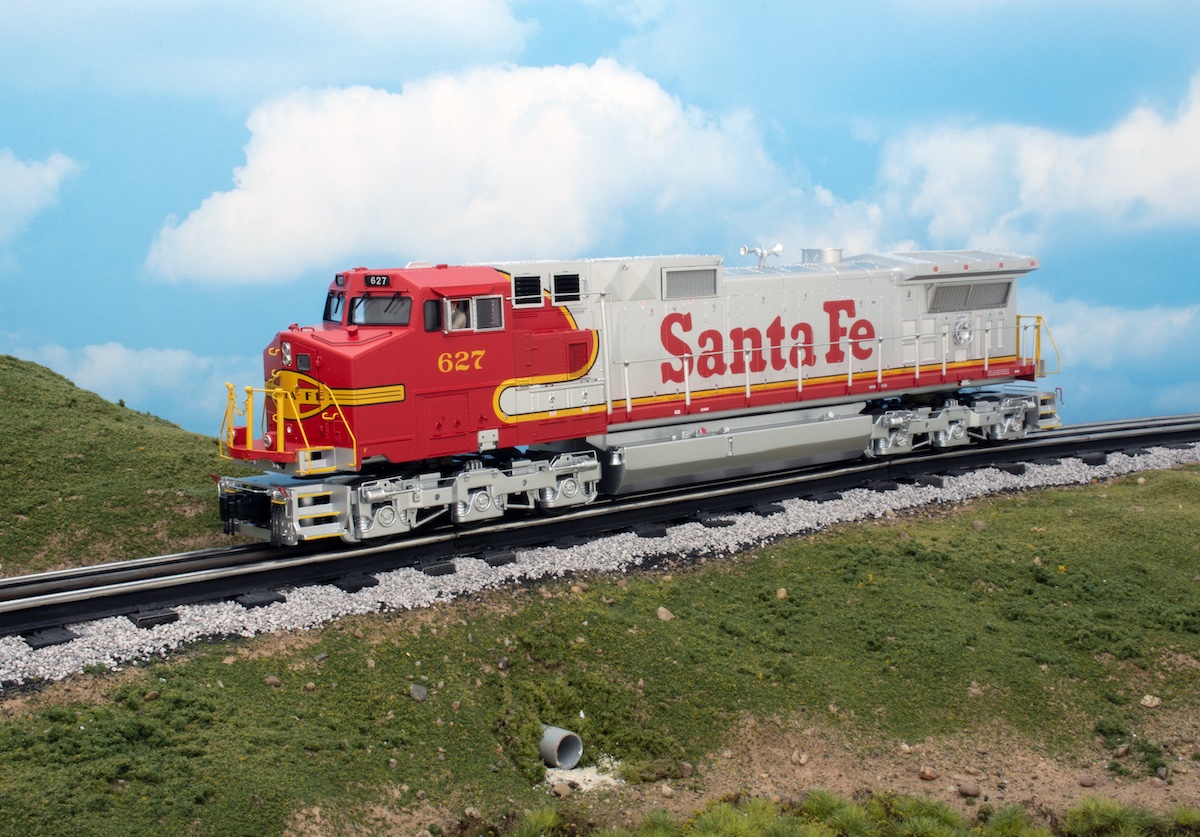MTH and Lionel in their RailKing and LionMaster lines have used selective compression to build articulated locomotives that can negotiate O-31 curves. Most of the compression is in length, with a bit in width and height, giving the locomotives a decidedly stubby look.
K-Line, however, has done something different. Instead of selective compression, it has created a fully proportioned 1:64 scale locomotive that operates on O gauge track.
S gauge that runs on O gauge track? If you are a scale-only operator prone to popping blood vessels, you may want to jump ahead to the next review. But if you happily operate compressed K-Line or Lionel Alco diesels or diminutive postwar Lionel Turbine steamers on your O gauge layout, then by all means, read on McDuff.
The Union Pacific Big Boy was the largest and arguably the most powerful locomotive built during America’s steam era. Alco constructed 25 Big Boys for the UP in two batches, 20 in 1941 and five more in 1944.
The model
According to Bob Grubba, K-Line’s engineering czar, rather than just cut and paste a model for O-31 operation, this locomotive was made in 1:64 scale, keeping all of the dimensions of the locomotive and tender accurate and in relative proportion to each other.
Visually, the K-Line Big Boy looks just right next to a postwar American Flyer Hudson. Both locomotives are two inches wide, both have drivers an inch tall, and in S scale, they both mirror the length of their prototypes. (The actual Big Boy was 124 feet, 5 inches long and the model is 122 feet long in S scale; the actual Hudson was 95 feet, 10 inches long and the Flyer model is 99 feet in scale.) In O scale, the K-Line Big Boy measures 100 scale feet, or 24 scale feet (6 inches) short.
K-Line offers the model in two versions, one with a whistle and bell and the other with Lionel’s TrainMaster Command Control and RailSounds.
In spite of the low price, the tooling for this locomotive has produced an outstanding hunk of metal!
The cleanliness of the cast-in details – and there are plenty – is second to none in any price range. Rivets and boiler bands are sharp and well defined, as are the cast-in hatches, levers, and piping. The riveting along the sides of the firebox merits special attention.
This locomotive has an attractive nose with all the major detail points represented, including the UP shield, headlight, number boards, and marker lights. All surface textures where O scale shop crews might walk are smooth.
The boiler has accents that include a brass-tone bell, pop-off valves, and even a red valve handle.
The cab has an opening roof hatch, “glass” in the windows, and a firebox backhead with gauges, pipes, and levers. You’ll find engineer and fireman figures at their positions.
The tender has grab irons along the top, red markers and a backup light on the rear, and a glossy cast-in coal load.
Painting is excellent with no noted overspray or blemishes. The rig is done in basic black, with silver gray on the smokebox and firebox.
Even before the locomotive was in stores, I had phone calls from angry operators complaining about the Big Boy’s simplified running gear.
It turns out that K-Line used a photo of another manufacturer’s Big Boy in its advance ad. That Big Boy has more complete running gear this model.
I asked Bob Grubba about it, and he said, “We made some changes to try to keep the price down and we didn’t think this would matter to most of our customers. Well, we know better now, and the (upcoming) Allegheny will have more detailed rod assemblies.”
Indeed, the K-Line Big Boy has minimal running gear. With 1-inch-diameter drivers, it looks more like something off a 2-8-0 Consolidation than the undisputed King of the Rails.
On the test track
The Big Boy has two can-style motors, one for the front set of drivers and one for the rear. Each set of drivers pivots in the frame and has a pair of traction tires. The power, flexibility, and traction tires are a winning combination.
We tested the basic version of the Big Boy without TMCC and RailSounds. Just before this went to press, we received a second Big Boy loaded with TMCC and TrainMaster systems.
I was impressed with the Big Boy’s performance in all speed ranges. On the low end of the speed range the locomotive averaged a smooth and consistent 12.3 scale mph. I did notice that at the lowest speeds, there were some squeaks (solution: oil) and some odd clicks. At the top end, I timed the locomotive at 82.8 scale mph. Slow for the typical K-Line steamer, and more in keeping with the prototype.
Based strictly on the diminutive looks of the engine, I expected the Big Boy to be only a so-so puller, but I was sure wrong. Drawbar pull for the 9 pound, 9 ounce locomotive was superb. I racked up 2 pounds, 12 ounces on our test gauge, which equals roughly 132 free-rolling pieces of rolling stock.
The twin-stack smoke unit takes a page right out of the mosquito fogger school of design. Our only criticism is that while a ton of smoke was generated, it lacked a great deal of “lift.” Most of the smoke – which is heavier than air – cascades over the rim of the stacks and down the sides of the boiler.
The basic version of K-Line’s Big Boy uses Lionel SignalSounds – a bell and whistle but no steam sounds. It hit the spot with me. The whistle was deep and robust, and the bell was suitably annoying. The tender coupler is the standard “thumbtack” type that is opened with an uncoupler track section. The TMCC version has a coil coupler.
Since the Big Boy can handle curves down to O-31, we were able to test it on all of the home layouts of CTT’s extended staff. On O-31 curves it exhibits some wild overhang, and on former CTT staffer Carl Swanson’s layout, the locomotive bumped a trackside structure or two.
When running on CTT founding editor Dick Christianson’s layout, the locomotive pilot truck derailed frequently on an O-72 switch and on a previously trouble-free O-72 curve (in a tunnel, no less). It also derailed during tests on one other home layout.
We were able to duplicate the derailment in our workshop. The 61/2-inch-long front-driver assembly, including the pilot truck, pivots about 1/4 inch fore and aft. On a section of track with a rise – such as a track joint at the crest of a hill – the pilot truck becomes airborne until the weight of the locomotive pushes it back down. The center of gravity for the locomotive is beyond the mid-point of the locomotive, so the pilot truck is not pushed down immediately. On a curve, this combination of factors can cause a derailment.
Also during home-layout testing the locomotive’s whistle and bell stopped working, and we weren’t able to remedy the problem.
Size is relative, especially when it comes to K-Line’s Big Boy. You’ll either be attracted to the locomotive by its size or dismiss the locomotive because of its size. Despite sparse running gear, K-Line’s Big Boy is handsome and the locomotive is solidly built. With a little care to select a train of traditional-sized rolling stock to put behind it, the locomotive looks pretty sharp on an O gauge layout.
If you’re in the market for a $1,400 scale-sized 4-8-8-4 giant, forget this one. But if you have tight curves, a modest budget, and a hankering for big engines, K-Line’s $400 Big Boy is well worth investigating.















I wish I could find one. I love the fact that it runs on o-31 curves. I looked at the MTH but I can't use it with my Lionel TMCC.
That made it sound a lot worse than I've heard. I am buying one off Ebay.
can't get the smoke unit to work right. when i turn on the smoke, it dumps smoke but the engine won't move. other that, it's a nice engine and it hauls a good amout of cars